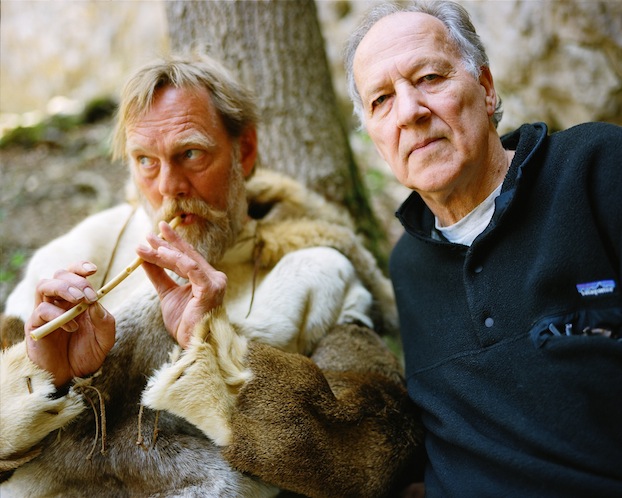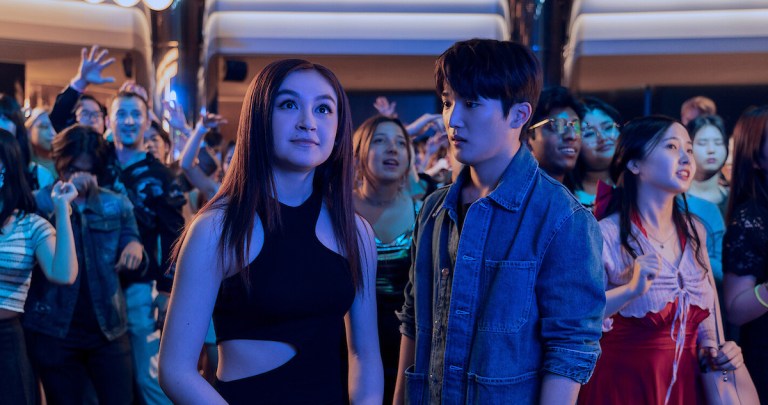Novelization Of Cave Of Forgotten Dreams: In 3D
Four or five people of indiscriminate gender film themselves as they walk through the woods to a cave containing the oldest paintings ever discovered. Werner Herzog is one of the people. Everyone is wearing the same navy blue jumpsuit.
By Megan Boyle


Four or five people of indiscriminate gender film themselves as they walk through the woods to a cave containing the oldest paintings ever discovered. Werner Herzog is one of the people. Everyone is wearing the same navy blue jumpsuit. Very few people are allowed inside the cave, but Werner Herzog has been given a generous grant to film it using a 3-D camera. The cave was discovered by some people who felt drafts of air emitting from underneath them somewhere.
The group enters the cave by opening a steel door constructed to keep the cave preserved as it was found. The cave wasn’t always underground, but now it is. Layers and layers of earth-materials have grown over the cave. The cave is dark. Splotches are on the walls. Werner Herzog’s disembodied voice says something about how there isn’t much space. Someone points at a wall with red splotches on it and says “These are the spots.”
Everything is black. Tiny white dots appear against the blackness. It looks like the night sky. Werner Herzog’s disembodied voice says scientists have used lasers to diagram every inch of the cave. The white dots grow in number and begin to take form. They take more and more form. They form a pixelated 3-D map of the cave, which vaguely resembles a country.
In an office near the cave, there is a long-haired young man wearing a circular scarf, sitting by a computer. He is a French scientist. The man says after he saw the lion-drawings in the cave, he couldn’t stop dreaming about lions. Werner Herzog asks if he was afraid of the lions. The man says no, he was intrigued. Werner Herzog asks what he did before he was a scientist and the man says he mostly juggled, but sometimes rode a unicycle in the circus.
A man who looks like Mark Twain squats by a rock formation. He recites a long list of animals that were alive before the cave was underground and people were still drawing animals inside of it.
A man wearing a shirt with four zippers gives a shorter list of animals. He says he’s more interested in the stories he can infer from the cave-people’s lives rather than the drawings which indicate this.
Back in the cave, there are a lot of pictures of animals. Bison, horses, bison, bison, horses, lions. Someone drew one bison and 5,000 years later, according to carbon readings, someone drew another one on top of it. There are plans to artificially re-create the cave as a tourist attraction.
A woman referred to as the cave’s “custodian” leads the film crew along a narrow metal platform, showing them things about the cave. She points to a bear vertebrae that has been caked in many layers of calcite and seems to be sparkling. Many things in the cave appear to be sparkling.
When the custodian and the film crew reach the end of the platform, the custodian talks about a half-bison half-woman drawing that people have found particularly interesting. The half-woman half-bison drawing is only half-visible. A lot of time has been spent trying to guess what the other half is, exactly. Werner Herzog’s disembodied voice says no one can walk to see the other half of the drawing because that would destroy the calcified footprints of the people who drew it.
Outside the cave again, maybe twenty people appear occupied with computer screens or papers in a mostly white or grey room. Werner Herzog’s disembodied voice says the people are scientists studying the cave. A man and woman look surprised. They are bent over photos of cave-drawings. The woman says they’re recording every cave-drawing exactly as it appears, then tracing over the records of drawings to see what’s drawn underneath the drawings.
Someone has discerned that the red splotches on one of the cave’s walls were all splotched by the same man. There has been some debate about this, but it was definitely the same man. He had a crooked pinkie finger.
The man who looks like Mark Twain stands in a field. He holds a spear and talks about how smart the people who made the spear were. He says something like “Now I will show you how to kill a horse” and throws the spear at nothing. It lands. He does this a few times. Werner Herzog’s disembodied voice wants to know if the people who made the spear were more skilled at killing horses than the man. The man says they were.
An old man who looks like Bilbo Baggins sniffs along a wall of forest debris. He says he’s using his sense of smell to search for caves, which he says smell like nothing, but since everything else has a smell, caves can be detected by their absence of scent. He is the former president of a French perfume association. Someday he might help simulate the way this cave smells for its future tourist attraction replica.
People are talking again about why the half-woman half-bison drawing is interesting. Illuminated in a glass case in a museum are small limestone figurines of featureless women who might have been 5’1” and 190 pounds if they were living women. The figurines are called “Venuses.” A man stands by the case and says neanderthals were very clever, but they never produced cultural relics like these.
A man stands in the woods. He wears something made from animal skin and fur, and explains why he’s dressed that way. He holds a flute. The flute is very old. He says the flute can produce the same notes and tones we know today. He plays “The Star-Spangled Banner,” finishes, and lowers the flute.
The long-haired, circular scarf man is back, talking with Werner Herzog’s disembodied voice about Aborigines who drew things on rocks and in caves until the 1970’s. He tells Werner Herzog that some Aborigines, when asked why they’re painting, claim they aren’t actually painting. They say spirits have taken over their bodies and the spirits are painting. The circular scarf man says the word “troubling.”
A relatively hairless man with glasses stands near rocks. He says that from the cave-drawings, he has deduced that the cave-people thought of things in terms of “fluidity” (a tree can speak, a man can have a horse’s head) and “continuity” (something else). He says that “homo sapiens” means “one who knows,” but he thinks “knowing” is the wrong word and should be replaced by a word indicating spirituality instead.
Werner Herzog and his film crew are allowed inside the cave one last time. If people go in too many times, the cave might become damaged from their breathing. This has happened with other caves. The crew has been permitted to put their camera on a stick to see the other half of the half-woman half-bison drawing. Werner Herzog’s disembodied voice says “It is a bison embracing the sex of a woman.”
Twenty miles from the cave is a nuclear power plant. There is an enclosed, rainforest-like atmosphere near the power plant. People have put crocodiles in the rainforest for some reason. Some crocodiles have developed mutations. Werner Herzog’s disembodied voice speaks over an image of an albino crocodile looking at what appears to be its own reflection but is actually an identical albino crocodile, moving its tail a little. Werner Herzog’s disembodied voice asks if humans today are the same thing as mutated albino crocodiles. Someone near the cave’s entrance flies a remote-controlled camera, which has been used to film aerial shots of the cave, into their hands. ![]()



